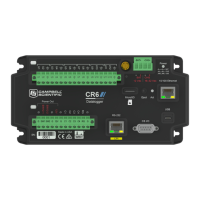Use the DataTable()instruction to define the number of records, or rows, allocated to a data
table. You can set a specific number of records, which is recommended for conditional tables, or
allow your data logger to auto-allocate table size. With auto-allocation, the data logger balances
the memory so the tables “fill up” (newest data starts to overwrite the oldest data) at about the
same time. It is recommended you reserve the use of auto-allocation for data tables that store
data based only on time (tables that store data based on the DataInterval() instruction).
Event or conditional tables are usually set to a fixed number of records. View data table fill times
for your program on the Station Status | Table Fill Times tab (see Checking station status (p. 128)
for more information). An example of the Table Fill Times tab follows. For information on data
table storage see Data memory (p. 58).
4. Working with data 57

